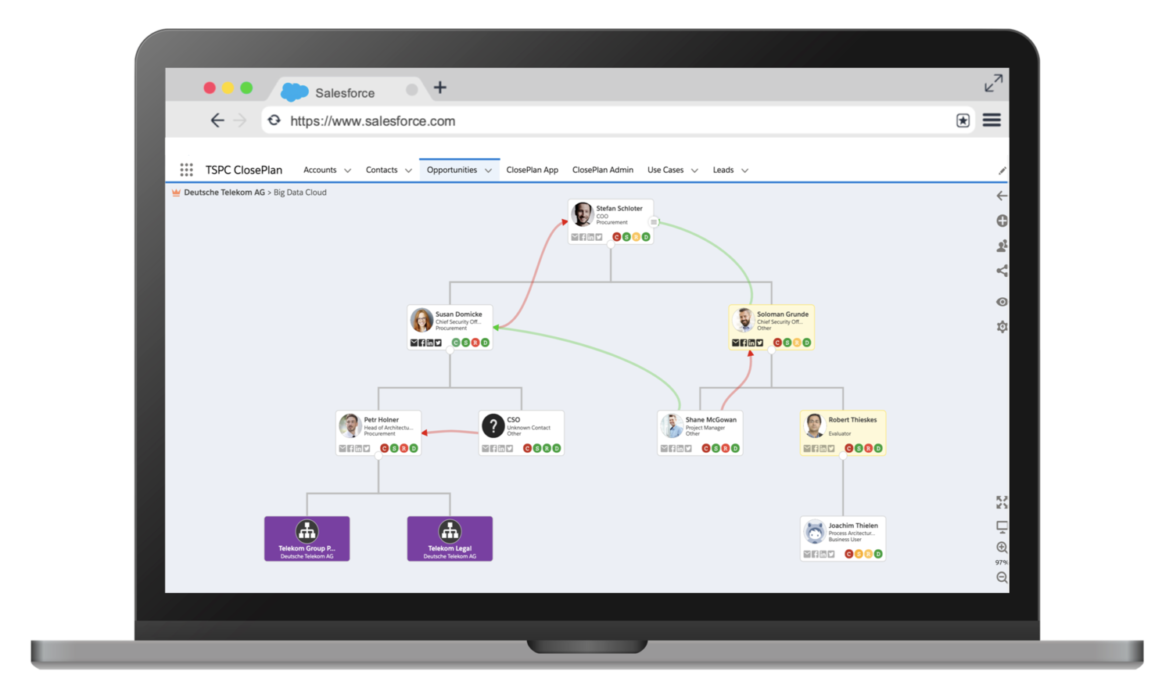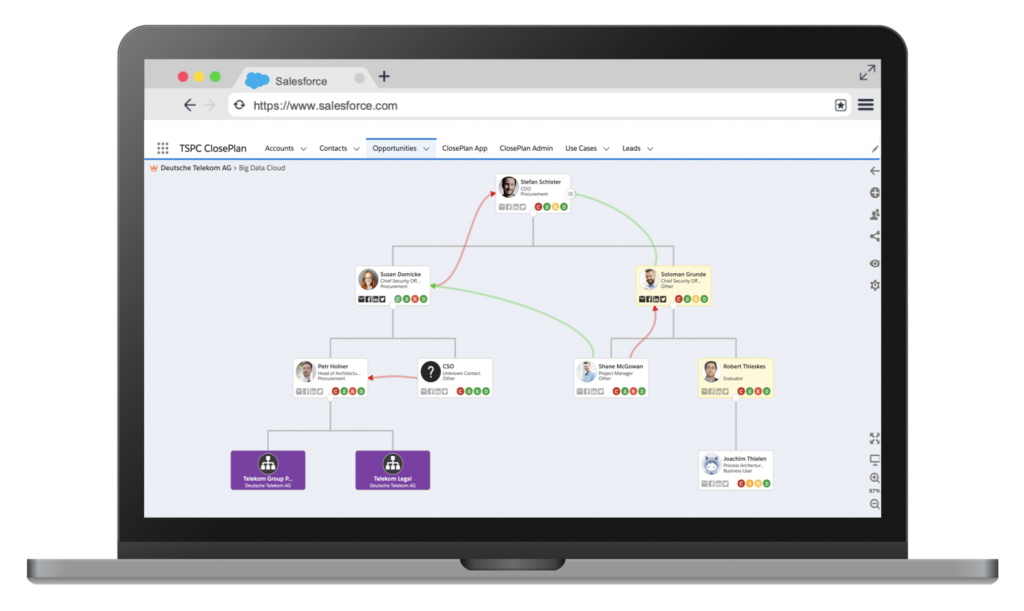Table of Contents
Share this article
Learn from the brightest minds how to predictably and efficiently grow revenue.
Related Content
5 Ways to Use the Ebsta Integration With HubSpot to Improve Sales Performance
How to improve adoption of HubSpot with Ebsta
B2B Sales Benchmarks: 2023 H1 Update
The latest update from the 2023 B2B Sales Benchmarks analysis of over $37bn in pipeline.
How to improve AE quota attainment (according to data)
23% of reps are contributing 83% of revenue. Here's how to solve it (with data)

Relationship Mapping Guide to Sales Success
Table of Contents
Guide to Relationship Mapping for Success
In the business world, potential clients say “pass” all the time due to weak relationships and a lack of understanding. And so do existing clients. It’s a convenient way to move decisions forward. The more complicated the decision, the more at stake, the more important relationships become.
What is Relationship Mapping?
Relationship mapping is a tool that helps companies:
- Win new clients
- Protect existing accounts
- Grow revenue among existing accounts
Traditionally, relationship mapping meant actually building out a visual chart of all the key stakeholders. You’d typically create a card for each stakeholder, including background notes, motivations, biases, etc. You’d then arrange the cards to show who reports to whom, using different symbols, color codes and line types (depending on your system and how complex you want t be) to indicate relationship type, relationship strength, internal alliances, influencers, conflicts, etc.
While this type of relationship mapping is a worthwhile strategic exercise, the sheer complexity makes it difficult to execute, causing companies that could benefit from relationship maps to avoid them altogether. After the initial build, most visual relationship maps quickly become obsolete because updating them proves cumbersome and inefficient. Portability is also a challenge as the insights are typically housed in a centralized location.
Today, technology eliminates the need to create and manually update one-off visual maps. Instead, relationship mapping insights can be kept up-to-date automatically with timely insights being delivered via email and mobile, the platforms sales and business development people use ubiquitously.

Why is Relationship Mapping Important?
In today’s modern sales environment, sales leaders must have a full understanding of the stakeholders and decision makers involved on the buyer side. Yet research shows that only half of sales reps can effectively navigate to the right people in the buying cycle.
According to a recent CSO Insights Sales Optimization Survey, the “average” sales opportunity has 45 decision makers – this is even larger for megadeal opportunities. It is critical that sales reps not only identify these decision makers, but more importantly earn their votes.
Relationship maps are visual maps of the key players that enable sales teams to quickly identify the ‘must have’ votes and where the risks are in an account or opportunity. Once you have these relationship maps, you can reinforce your sales strategy and ensure that your sales messages are resonating with the critical stakeholders throughout the sales process.
Visual relationship maps help you gain a full understanding of the most important stakeholders, how they’re connected within the organization, and help your teams focus on execution tactics and activities to gain access and communicate value to the individuals influencing the budget and buying decisions. Visualizing this information with a relationship map, is critical to helping your team identify gaps in relationships and build quality relationship development plans.
Relationship Maps take the blinders off of megadeals, and allow sales teams to do the following:
- Quickly and easily map contacts from your CRM and visually connect the dots – from coaches and stakeholders, to decision makers and procurement, organizational charts are easily built with drag and drop functionality.
- Analyze scorecards to identify who is friend and who is foe and the strength of the relationship.
- Determine the relationships that you need to grow and any political risks that may need to be neutralized.
- Avoid surprises that could arise from new players entering the sales cycle unexpectedly.
- Align sales tactics to the priorities, initiatives and goals that matter most to each individual.
With relationship maps and an understanding of who matters, as well as the routes to power, you will be one big step closer to closing the gaps on those all-important megadeals and reaching your revenue targets.
How to Create a Relationship Map for Key Accounts
Grab a pen and paper – or download this Relationship Mapping Template for Excel – choose one of your key accounts and write down:
- Who do you know well?
- Is there anyone you need to know better?
- Who don’t you know at all (instead of names, write down job titles or department names)?
Then add some extra dimensions.
Categorise your contacts by who are the:
- Influencers. Who has the most say on the future of your partnership?
- Users. Who actually use your product or service and how do you help them succeed?
- Leaders. Who are the Executives that have the power to raise concerns or put up roadblocks?
- Decision makers. Who controls the resources?
- Budget holders. Who has a financial stake?
Then, consider if they are a:
- Supporter. Who is on your side?
- Detractor. Who doesn’t like you and actively tells people?
- Champion. Who absolutely loves your company and sings your praises even when you’re not around? People that do the selling for you!
Finally, think about the quality of your relationships. I use colour coding:
- Red = Weak
- Amber = Good
- Green = Strong
After going through this exercise you may discover there’s a bunch of people who aren’t as important as you thought. Take them off the list, you don’t need to worry about them for now.
There’ll be others where you need to do a bit more digging to understand the relationship more.
You’ll then be left with as solid of list of where to engage – it should be only on those people who are critical to your success.
Relationship Mapping: Exercise Example
This free Relationship Map Excel Template is a great place to start. You can easily enter all your key stakeholders, qualify the strength of your relationships and create an action plan to improve engagement.
If you really want to kick it up a notch, think about using online relationship mapping tools like Ebsta.
Relationship Mapping for Salesforce with Ebsta
Once CRM adoption is solved, relationship intelligence can become automated. What this means is that executives, sales and business development teams can access relationship intelligence on-demand or they can have it delivered.
Curious to see if Ebsta can solve CRM adoption and automate relationship intelligence at your company? Just ask. We’re happy to show you around the solution when you request a demo.


